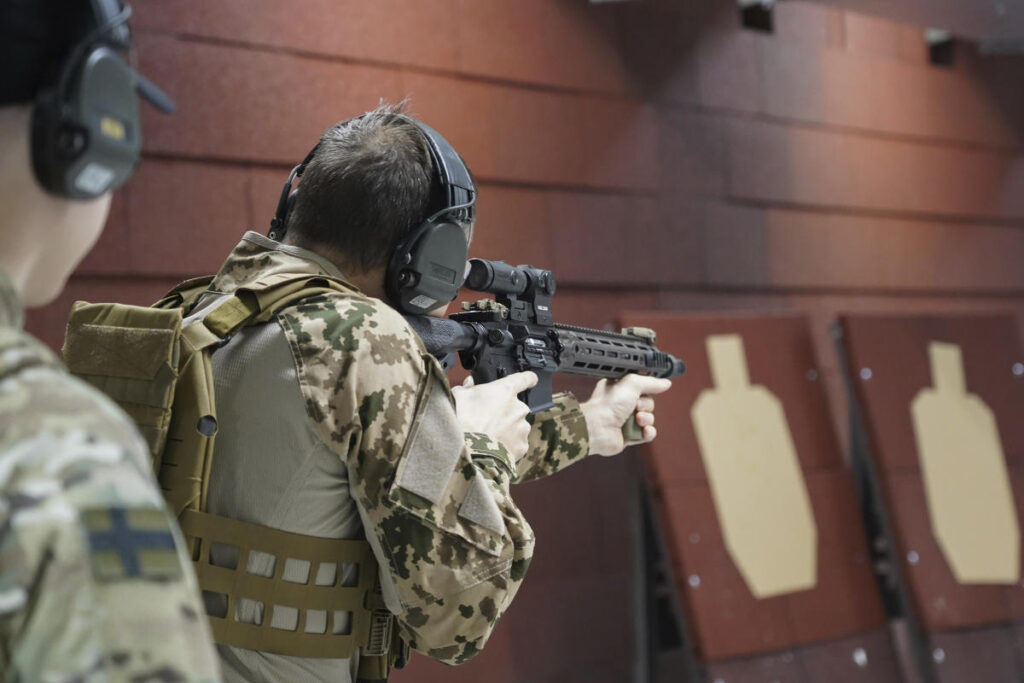Unsettled by Russia’s recent expansionist actions and bolstered by its accession to NATO, Finland is actively working to enhance its national self-defense capabilities, pushing beyond its traditional military framework. This shift comes in the wake of notable geopolitical tensions, particularly following Russia’s invasion of Ukraine in February 2022, which has sparked a marked increase in interest in weapons training across the Nordic nation. The surge in self-defense training is exemplified at local shooting ranges, especially one operated by the Vantaa Reservist Association in Kerava, where membership has more than doubled in just two years, reaching over 2,100. The association’s chairman, Antti Kettunen, observes that many new members are motivated by a newfound necessity to acquire self-defense skills as fears of regional instability grow.
In response to the increased demand for firearms training and national defense awareness, the Finnish government has announced plans to establish more than 300 new shooting ranges, an impressive leap from the current 670 in operation. This initiative underscores the heightened national interest in self-defense, particularly given Finland’s substantial 1,340-kilometer border with Russia. Lawmaker Jukka Kopra, chairing the defense committee, notes that the interest in national defense has escalated not only due to historical apprehensions but also as a direct response to recent Russian aggression. These developments signal a significant cultural shift in a country where shooting sports were traditionally viewed as leisure rather than self-defense training.
Finland’s efforts to bolster self-defense are not limited to just firearms training; broader strategies include a doubling in the number of training days conducted by the National Defense Training Association. This year alone, the association has hosted around 120,000 such days—far exceeding numbers from three years ago. Moreover, the national reservist association has seen a considerable uptick in membership, growing to over 50,000, largely comprised of military reservists and civilians, reflecting an urgency to prepare for any potential threats. The emphasis on rebuilding and maintaining civil defense infrastructures is crucial in this context, as Finland retains approximately 50,000 Cold War-era civil defense shelters, capable of accommodating about 85% of its population.
Specialists in emergency services, like Tomi Rask of Helsinki Rescue Services, highlight the modern relevance of these shelters amid current warfare tactics and security challenges from neighboring countries. Rask emphasizes the necessity of preparing for potential threats, indicating a widespread recognition among Finnish citizens of the need to safeguard their communities. This new era of civil defense is characterized by proactive measures aimed at equipping the public with essential survival skills in an increasingly uncertain geopolitical climate.
At shooting ranges like the one in Kerava, a diverse group of participants, including military reservists and shooting enthusiasts, are engaged in intensive training exercises, enhancing their tactical skills in simulated scenarios. The atmosphere is charged with a blend of camaraderie and seriousness, as many participants view their training as both a serious commitment to national security and an exciting recreational activity. Individuals have expressed a preoccupation with Finland’s eastern neighbor, reinforcing a sentiment that many have joined these training activities in response to the escalating Russian threat.
The historical context of Finnish-Russian relations further shapes the national psyche, as Finland’s identity has been significantly influenced by its past conflicts with Russia, such as the Winter War during World War II. This troubled history instills a sense of urgency among Finns to remain vigilant and prepared. Kettunen articulates a common sentiment that learning to shoot, much like swimming, necessitates preparation and practice; failure to acquire these skills can lead to dire consequences in times of crisis. Thus, the surge in interest in self-defense training reflects a broader movement within Finland to build resilience and readiness amid ongoing geopolitical tensions.

